ASUS ROG Phone 5 Benchmarks: The Mightiest Android Yet

The ASUS ROG Phone family has always been synonymous with squeezing the most performance out the Android smartphone platform and more specifically Qualcomm's Snapdragon mobile processing platforms. If you've been keeping tabs on the ROG phone line-up, you're probably aware that ASUS recently unveiled its 5th gen ROG Phone 5, and it's based on Qualcomm's powerful new Snapdragon 888 mobile SoC. With big gains claimed in both standard compute and graphics workloads, versus Qualcomm's previous gen Snapdragon 865, the ASUS ROG Phone 5 provides for an interesting vehicle to look at what should prove to be absolute top-end performance for flagship Android phones in the weeks and months ahead.
We've only had the new ROG Phone 5 in-house for a few hours, and we're still grinding out our full review. However, we've already run the new mighty ROG Phone 5 through its paces around the benchmark test track here at HotHardware, and we wanted to share some of our more interesting findings.
We've only had the new ROG Phone 5 in-house for a few hours, and we're still grinding out our full review. However, we've already run the new mighty ROG Phone 5 through its paces around the benchmark test track here at HotHardware, and we wanted to share some of our more interesting findings.


In addition to being a full-featured, large format phone with a punchy 6.78" HDR10+ certified AMOLED display, that display is also capable of pushing a silky smooth 144Hz refresh rate for what should result in buttery-smooth, uncapped performance in gaming workloads. In addition, our ROG Phone 5 is strapped with a full 16GB of LPDDR5 memory and 256GB of fast UFS 3.1 Flash storage. We have a ROG Phone 5 Ultimate inbound as well, and it sports another 2GB of LPDDR5 for total of 18GB, though we're not sure how much that will add to the performance equation.
Update, 3/17/21 10:55 AM - Here's our video review for your viewing pleasure, to whet your appetite for our full print review coming soon!
Benchmarking The ASUS ROG Phone 5 - An Amped-Up Snapdragon 888 Gaming Flagship
You might say that this new Android gaming handset is dialed for the performance freaks. So let's take a quick look at the early numbers, shall we? In the following benchmarks, we set the phone's display to 144Hz and tested both in the ROG Phone 5's standard performance mode and higher performance X-Mode settings.
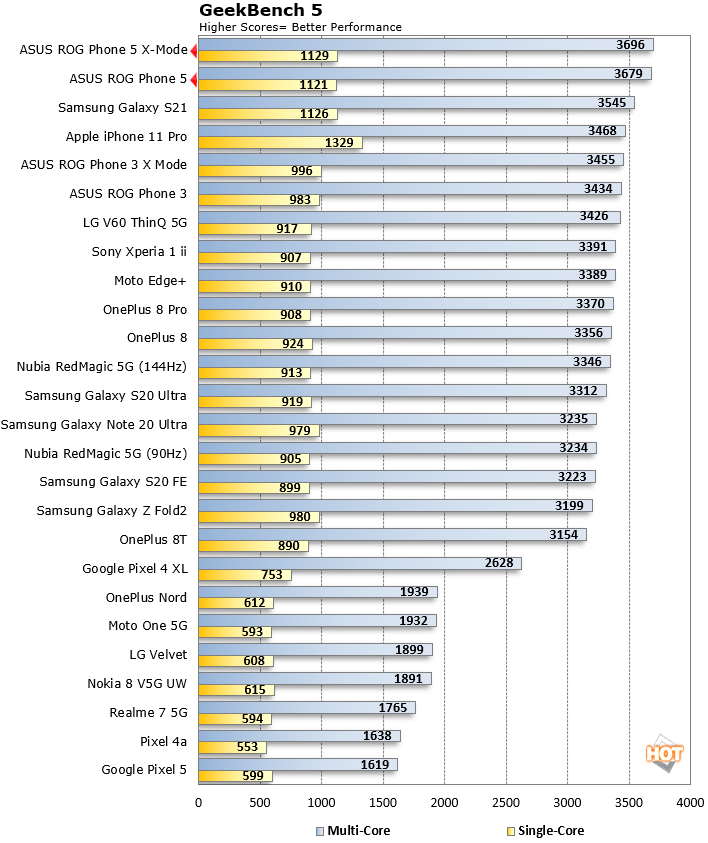
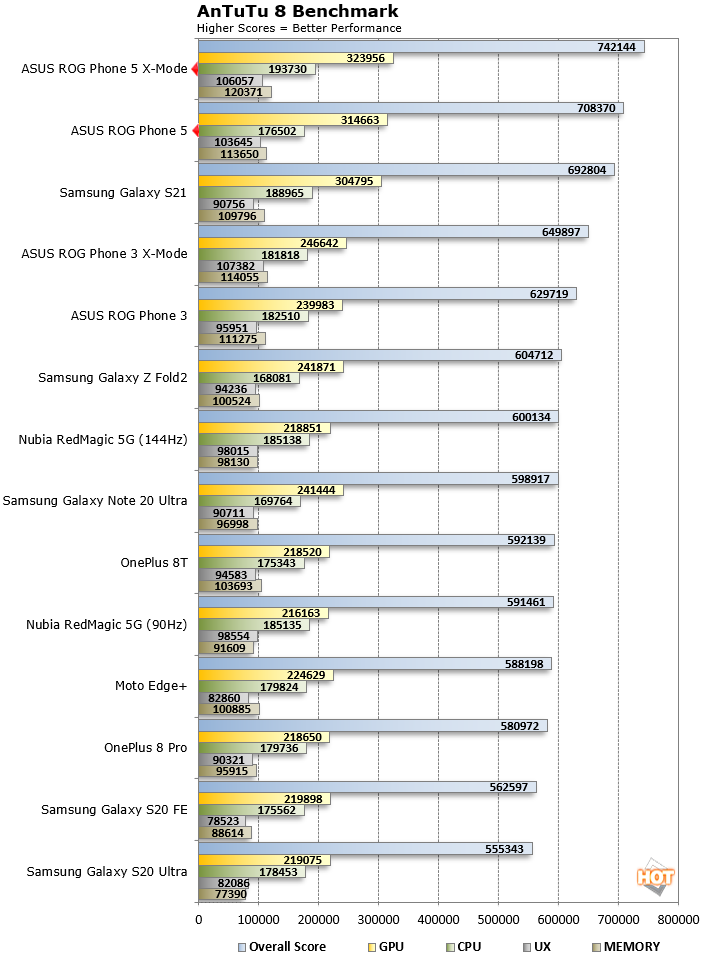
From a general purpose workload standpoint, the ASUS ROG Phone 5 delivers about a 3 - 7% additional lift in performance, versus Samsung's Snapdragon 888-equipped Galaxy S21, and over 20% better performance versus previous gen Snapdragon 865-class flagships. Although we did find some interesting results in PCMark for Android...
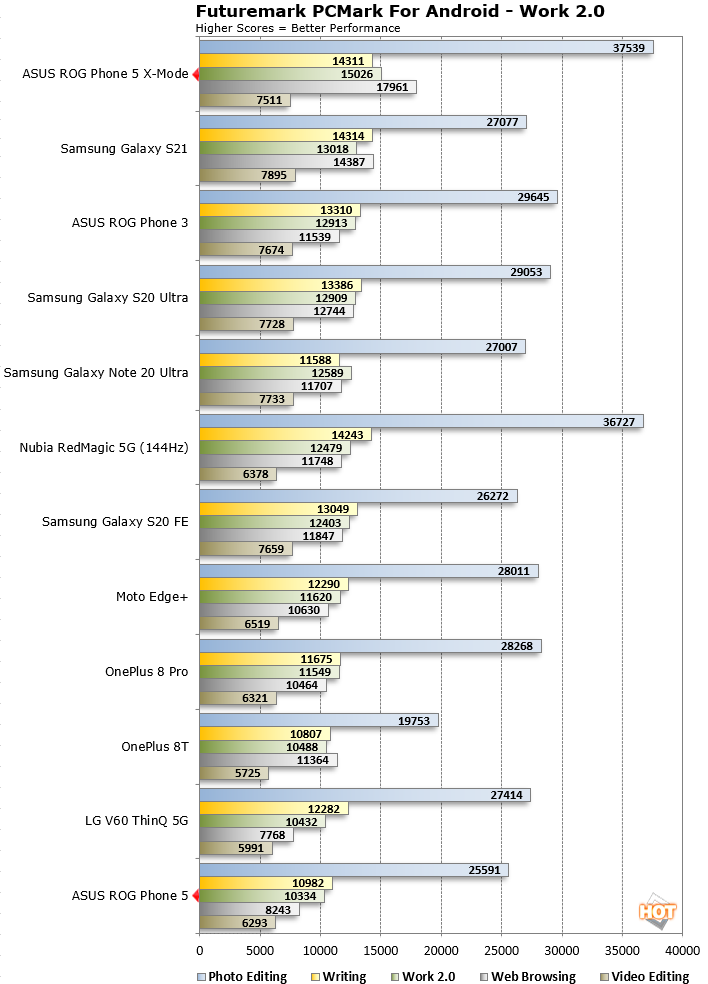
Here you can see the ROG Phone 5 continues its commanding lead when set to its performance X-Mode configuration. However, when in standard mode, the new ASUS flagship gaming phone drops to the bottom of the pack. We've had discussions with Qualcomm with respect to Snapdragon 888 and this benchmark, and were told PCMark's workload is likely being handled by the new Snapdragon architecture's efficiency cores, because the workload isn't all that strenuous. You'll note the Galaxy S21's more middling performance here as well in this benchmark. It seems as though the ROG Phone 5's standard mode, at least in this benchmark, really let's Qualcomm's power-savings features kick into gear, while its X-Mode dials up the best scores we've seen yet in this test.
ASUS ROG Phone 5 Gaming And Graphics Performance
Let's look at some more graphics-intensive benchmarks next...
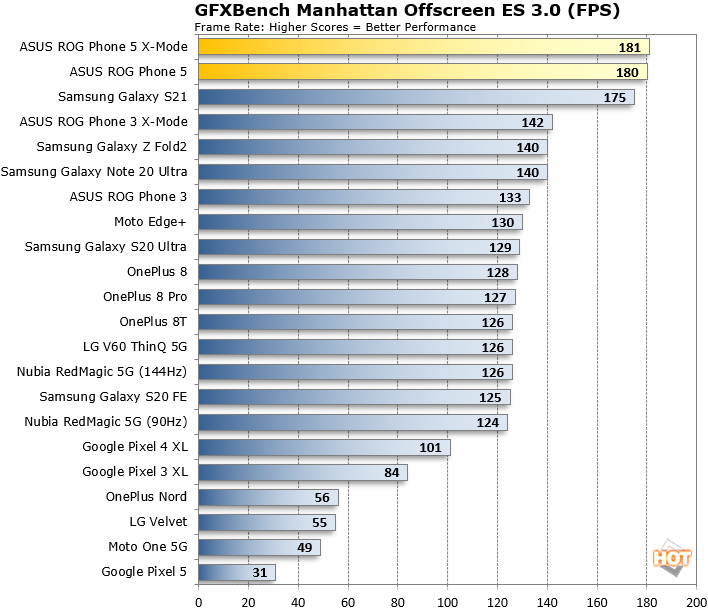
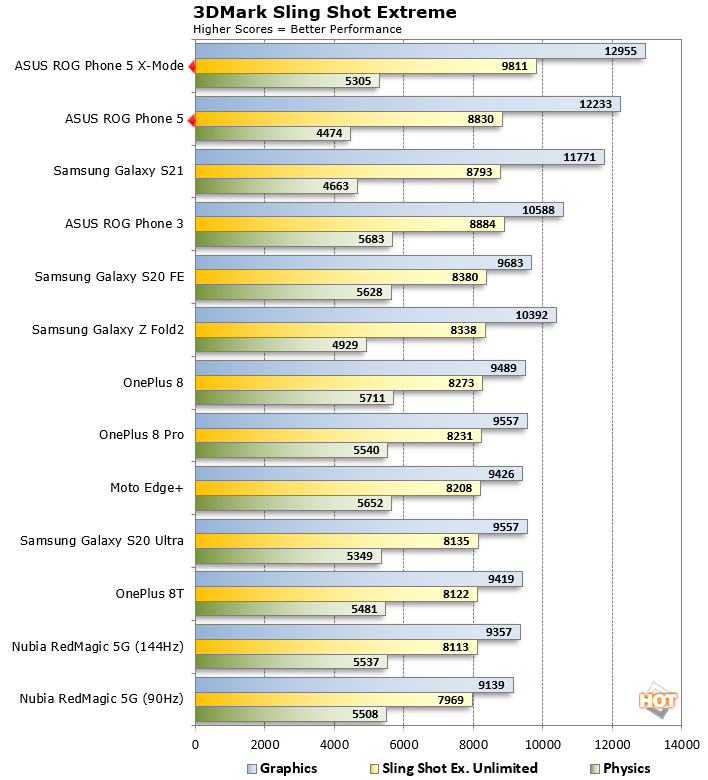
Here the ROG Phone 5 shows about a 3 - 4% lead over the similarly-equipped Galaxy S21 and a 17 - 25% lead over the previous generation Snapdragon 865-powered handsets, depending on whether you're considering GFXBench or the 3DMark Sling Shot tests.
3DMark Wild Life, however, presented more balanced findings with its more intense 3D graphics workloads...

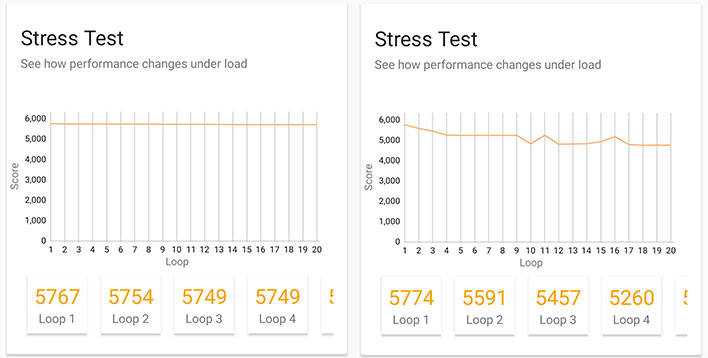
As you can see in the top level performance benchmark, the ROG Phone 5 is about on par with the Snapdragon 888-powered Samsung Galaxy S21 in this benchmark. In fact, it's well within the margin of variability in this test. However, as we discovered in our full Galaxy S21 review, not all smartphone thermal solutions are created equal, and the Galaxy S21 bleeds off over 40% (bottom of that page) of its performance over extended workloads in the Wild Life Stress test. Meanwhile, looking at the ROG Phone 5's stress test results above, in X-Mode the new Android gaming flagship is a rock, maintaining 99% of its performance across the test's full 20 minute duration. Whereas, in standard performance mode, the ROG Phone 5 only bleeds off about 17% of its performance.

That wraps-up our quick-take ASUS ROG Phone 5 performance preview for now, but stay tuned to HotHardware in the days ahead for our full review. So far, these benchmark numbers are interesting, especially if you consider the nuances in each of ASUS' performance modes, but we're looking forward to digging in deeper with this beastly gaming phone and really seeing what it's made of, so stick around.
And sound off in the comments below if you'd like us to look at anything specific for our full review.
And sound off in the comments below if you'd like us to look at anything specific for our full review.


